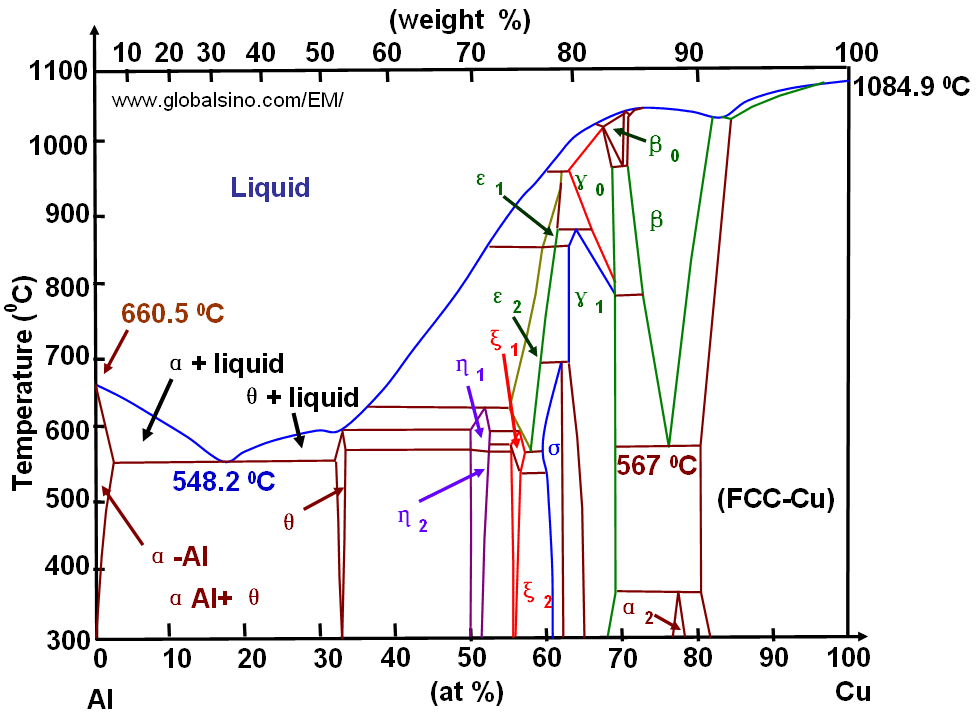=================================================================================
Figure 2000 shows the Al-Cu equilibrium phase diagram.

Figure 2000. The Al-Cu equilibrium phase diagram.
The electromigration resistance of Al can be increased by alloying with copper at low concentrations, e.g. ~ 0.5%.
The nucleation and growth of second-phase particles have been well demonstrated for Al-Cu bulk system [1]. Single-crystal Al-Cu thin films showed the presence of coherent and metastable precipitates at annealing temperatures below 200 °C, as well as stable θ-A12Cu precipitates above 250 °C s [1]. Al-Cu alloys are known to form a series of HR compounds:
i) Cubic γ-Al35Cu65.
ii) Monoclinic ζ-Al9Cu12.
iii) Monoclinic η-AlCu.
iv) Rhombohedral δ-Al39Cu61.
v) Tetragonal θ-Al2Cu.
Table 2000 lists the different grain growth rates of pure bulk Al and Al-4% Cu alloy thin films after 100 min annealing. The grain growth rate increased by one order of magnitude in pure bulk Al, while in the same temperature range the growth rate only increased by a factor of about 0.8 in the Al-4% Cu alloy thin films. Moreover, the growth rates for pure Al are ~103 times greater than those for the Al-4% Cu alloy films.
Table 2000. Grain growth rates of pure bulk Al and Al-4% Cu alloy thin films after 100 min annealing.
| Temperature (°C) |
Rate (Å/min) |
| Pure bulk Al [3] |
Al - 4% Cu films [4] |
| 400 |
1.0 × 103 |
1.8 |
| 450 |
3.9 x 103 |
2.4 |
| 500 |
1.3 × 104 |
3.2 |
In the grain boundary diffusion mechanism of electromigration, the electromigration process is retarded if the grain sizes are too small. For instance, the increased time to failure of Al-4 wt. % Cu alloy over pure Al in electromigration [4] can be explained by the difference of grain growth rates. In Al-4 wt. % Cu alloy, the grains are initially small and thus the ions remain essentially immobile to migration, resulting in enhanced component life.
[1] A. Kelly and R. B. Nicholson, Prog. Mater. Sci., 10 (1963) 149.
[2] S. Mader and S. Herd, Thin Solid Films, 10 (1972) 377.
[3] P.A. Beck, L. T. Demer and M. L. Holzworth, Trans. Am. Inst. Min., Metall. Pet. Eng., 175
(1948) 372.
[4] William C. Mcbee, and John A. Mccomb, Grain Growth in Thin Aluminum-4% Copper Alloy Films, Thin Solid Films, 30 (1975) 137-143.
|
